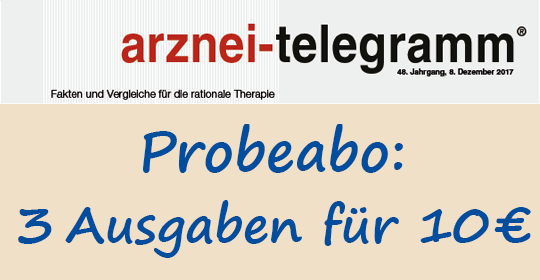Translation of a-t 2020; 51: 62
IN BRIEF
Oral contraceptives with a high risk of thromboembolism still frequently prescribed
According to a current assessment of data from the AOK Research Institute (WIdO), young women are less and less frequently being prescribed "the pill" with this charged to the statutory health insurance providers (2010: 46%, 2019: 31%, since July 2019 reimbursement until the woman turns 22, previously until they turned 20). Of the preparations prescribed, the percentage of those with a high or unclear risk of venous thromboembolisms (VTE) is declining, but was still 54% in 2019 (2009: 72%). What was striking was that the percentage of preparations containing dienogest has increased significantly within ten years, from 19% in 2009 to 37% in 2019 (1). For a long time, the thromboembolism risk of these preparations was unclear. Since late 2018, however, it has been known that the risk of thromboembolic events from ethinylestradiol/dienogest combinations (VALETTE, generics) is approximately the same as from other high-risk contraceptives, for example drospirenone (in YASMIN, generics) (2,3). The risk remains unclear for the combination of estradiol valerate plus dienogest (QLAIRA) (a-t 2019; 50: 14-5). Nevertheless, the proportion of pills containing dienogest had slightly increased in 2019 compared to 35% in 2017 (4). We feel that the warnings in summaries of product characteristics in Germany are entirely insufficient and do not reflect the recommendations of the Federal Institute for Drugs and Medical Devices (BfArM) to give preference to preparations with the lowest risk of VTE such as those containing levonorgestrel (LEIOS, generics) (a-t 2017; 48: 117). We still request that contraceptives with a high or unclear risk of thromboembolism be clearly categorised as drugs of subordinate or last choice, -Ed.
| (M = meta-analysis) | ||
| 1 | AOK federal association: press release of 28 July 2020; http://www.a-turl.de/?k=oock | |
| 2 | Jenapharm: "Dear Doctor Letter " ("Rote-Hand-Brief") of 11 December 2018; http://www.a-turl.de/?k=ains | |
| M | 3 | DINGER, J.: Front. Womens Health 2020; 5: 1-6 |
| 4 | AOK federal association: press release of 14 August 2018; http://www.a-turl.de/?k=lasa |
© arznei-telegramm (Berlin/Germany), August, 2020, protected by copyright laws.
Autor: Redaktion arznei-telegramm - Wer wir sind und wie wir arbeiten
Diese Publikation ist urheberrechtlich geschützt. Vervielfältigung sowie Einspeicherung und Verarbeitung in elektronischen Systemen ist nur mit Genehmigung des arznei-telegramm® gestattet.
